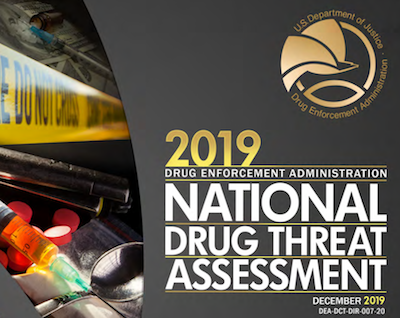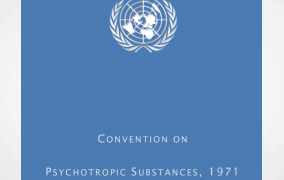Press Release
Annual report outlines strategic review of threats posed by drugs and drug traffickers
WASHINGTON – DEA Acting Administrator Uttam Dhillon today announced the publication of the 2019 National Drug Threat Assessment, which outlines the threats posed to the United States by domestic and international drug trafficking and the abuse of illicit drugs.
2019-NDTA-final-01-14-2020_Low_Web-DIR-007-20_2019“This year’s report illustrates a shifting drug landscape in the United States,” said Acting Administrator Dhillon. “We’re pleased that in 2018, drug overdose deaths declined over four percent overall, with even greater decreases – over 13 percent – in overdoses from controlled prescription opioids. Many challenges remain, however, including the spread of fentanyl and methamphetamine across the country. DEA and its partners will continue to work diligently to combat the drug trafficking organizations that bring these deadly substances into our country and endanger the American people.”
Illicit drugs, and the criminal organizations that traffic them, continue to represent significant threats to public health, law enforcement, and national security in the United States. As the National Drug Threat Assessment describes, the opioid threat continues at epidemic levels, affecting large portions of the United States. Meanwhile, the stimulant threat, including methamphetamine and cocaine, is worsening and becoming more widespread as traffickers continue to sell increasing amounts outside of each drugs’ traditional markets.
2019 NDTA findings of note:
- The opioid threat (controlled prescription drugs, synthetic opioids, and heroin) continues at ever-increasing epidemic levels, affecting large portions of the United States.
- The stimulant threat (methamphetamine and cocaine) is worsening and becoming more widespread as traffickers continue to sell increasing amounts outside of each drugs’ traditional markets.
- New psychoactive substances remain challenging and the domestic marijuana situation is evolving as state-level medical and recreational legalization continues.
- In 2017, drug poisoning deaths were the leading cause of injury death in the United States and reached their highest recorded level. Every year since 2011, drug poisoning deaths have outnumbered deaths by firearms, motor vehicle crashes, suicide, and homicide. Approximately 192 people died every day from drug poisoning in 2017.
The National Drug Threat Assessment provides a yearly assessment of the many drug abuse and drug trafficking challenges local communities face. Highlights in the report include usage and trafficking trends for drugs such as prescription drugs, heroin, methamphetamine, cocaine, marijuana and the hundreds of synthetic drugs. New to this year’s assessment is an expanded section on gangs – including street gangs, prison gangs, and outlaw motorcycle gangs – which now details gang activity geographically by DEA field division.
The assessment factors in data from many sources, including drug seizures, drug purity, laboratory analyses, information on the involvement of organized criminal


















